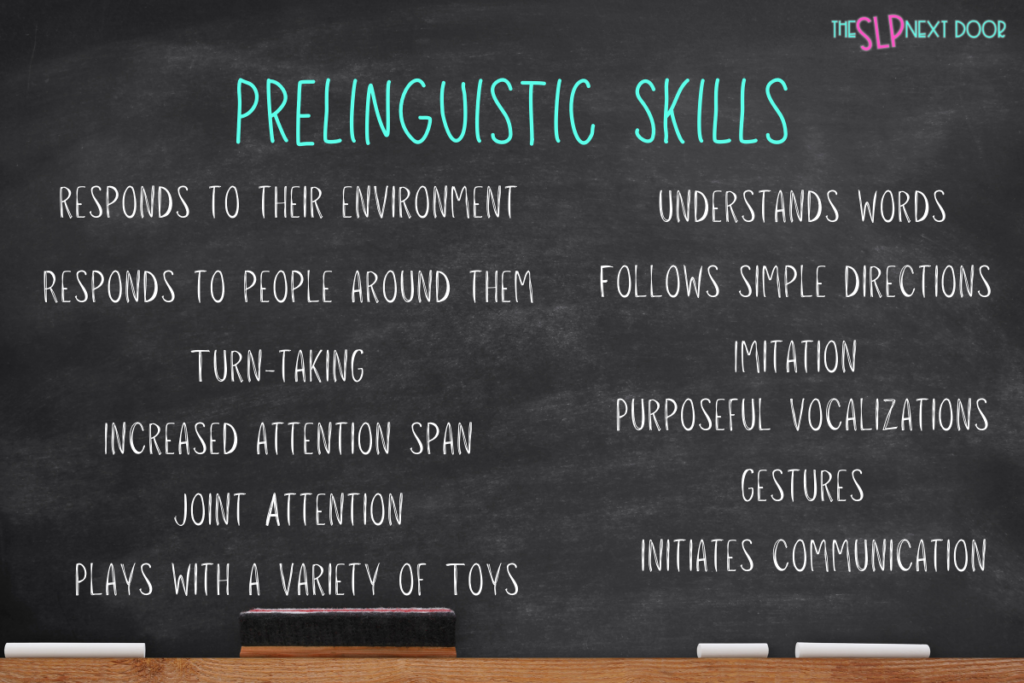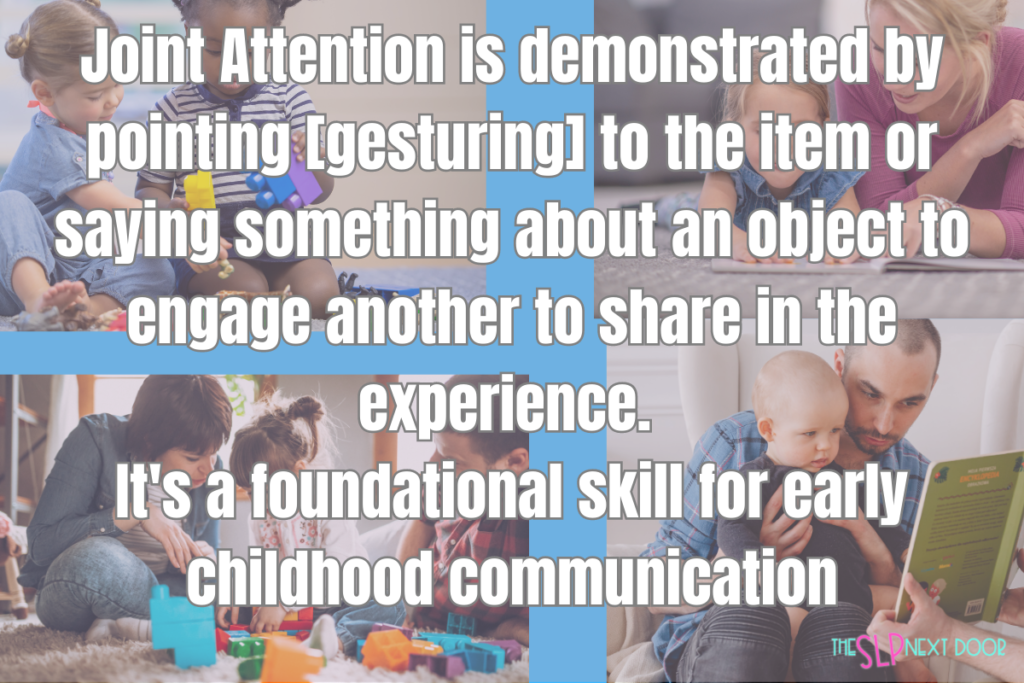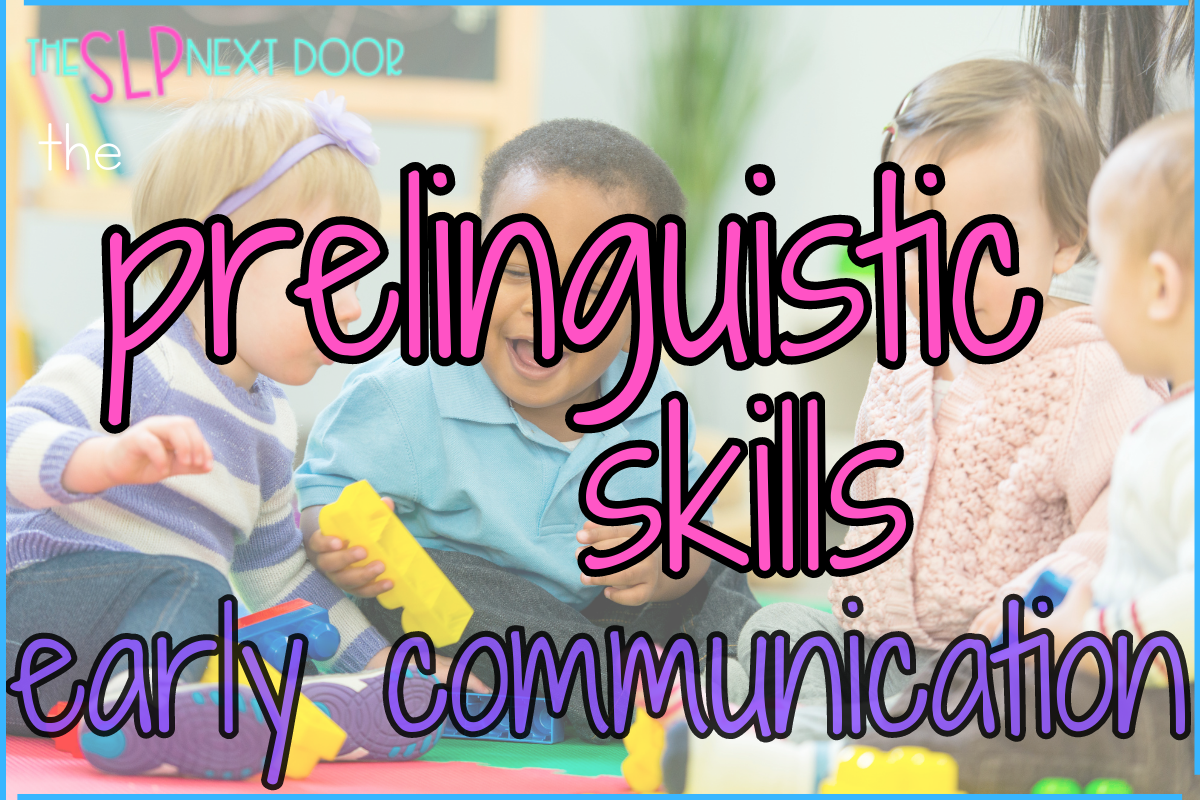Before early childhood communication can be effective, there are several prelinguistic skills that must be in place. Prelinguistic skills are acquired alongside the development of expressive and receptive language. They are the prerequisites to effective communication! Let’s chat about what they are and why they are important!
Environmental Awareness
Take a moment and pause. Where are you right now? What’s going on around you? What do you see? Are others with you or are you alone? Other than me, what do you hear?
Being aware of our environment starts from day one. Babies cry as soon as they emerge into the world once their bodies realize the environment has significantly changed and their awareness continues to develop as time progresses. Before any communication can be effective, babies and toddlers must be aware of their environment. Babies become aware of their surroundings very early on and even exhibit a few early communication skills before they turn a year old.
For example, when they feel they are alone, babies might cry out until someone responds. As they develop, toddlers also demonstrate an awareness of their environment when become upset after realizing their caregiver has left the room. Other times, toddlers become excited when they achieve a task and may look around for others’ approval.
Turn-Taking
Turn-taking involves 2 people engaging in a shared activity; sharing items or conversation. Early turn-taking may look like babies giving a response to a caregiver speaking with them, playing with toys together, or even reading books! It’s also important to keep the developmental stages of play in mind when it comes to this concept.
Attention Span & Joint Attention
Attention span and joint attention are two of the most important prelinguistic skills.
Attention span will develop as babies and toddlers grow. Let’s consider puzzles because they have a definite ending to the activity (you complete the puzzle) consider a baby’s attention to puzzles when they are initially introduced to them versus watching a toddler complete a puzzle by themselves. The attention to task is vastly different, but a continuum of development over time in terms of attention to task when we compare a baby only taking the pieces off to the toddler taking them off and replacing them correctly.
Joint attention occurs when two people pay attention to the same thing and share in the moment. Joint attention is demonstrated by pointing to [gesturing] the item or saying something about what is being pointed to or looked at. Joint attention promotes social interactions and shared interests!

Plays with a Variety of Toys
It’s important for babies and toddlers to explore the world around them! Playing with a variety of “toys” simply means that we want to see babies and toddlers have natural curiosity and explore their environment by way of interactions with a variety of items/objects/people.
We also want to determine if they are progressively moving through the stages of play. How a child transitions through the stages of play can impact language development as well.
Understands Words & Following Directions
Babies and toddlers must be able to understand and apply meaning to what is being said. In other words, before we can expect toddlers to express a word correctly, they must be able to apply meaning to the word. This is why choosing words that are functional (eat, more, drink, up, play, all-done, etc.) is a must when it comes to encouraging expressive communication. Toddlers demonstrate their knowledge of understanding words by reaching for labeled items, pointing to or reaching for familiar objects, identifying pictures in books, or identifying familiar people.
Along those same lines, babies and Toddlers should be able to follow at least basic 1 step directions. Remember, these are the basic skills in early development so aren’t looking for them to be perfect. They may not follow directions every time, but they understand the concept. We just want the skill to be emerging consistently.

Imitation Skills
Imitation includes the ability to imitate body movements, vocalizations, environmental sounds, or words. Infants imitate their caregiver’s facial expressions and vocalizations during the first year of life.
Toddlers learn so much by imitating what they see others do- remember what Vgtosky said about cognitive abilities? They learn from the adults in their world; essentially, taking what the adult does and imitating the skill.
The ability to imitate a skill or concept impacts development.
Vocalizations & Gestures
Purposeful vocalizations mean that babies engage in vocal play, social exchanges, and early labeling (first word/word approximations) in a meaningful manner. Beginning in infancy, babies progress through the 5 stages of phonation. Early cries and vocalizations transition into babbles and, eventually, words/word approximations.
In addition to the use of vocalizations and word approximations, babies and toddlers are also going to use gestures when they communicate, such as pointing, reaching, or early sign language.
Initiating Communication
What does communication initiation look like in early childhood? Vocalizations, yells, gestures, behaviors, throwing toys… how are they seeking out the attention of others? Hint: it doesn’t have to be appropriate [at least, not at first].
Consider this huge overview of these skills. They are continuous- meaning they should progress overtime. You have a starting point – whatever your starting point is- that’s the data you measure progress against.
So, if you find yourself in a session with a little one who doesn’t seem to be making progress or is struggling to meet your expectations on something- step back and reassess their skillset.
Looking for some activities to promote early communication skills? Be sure to check out my Busy Book of Preschool Concepts! It’s totally FREE!



2 Responses